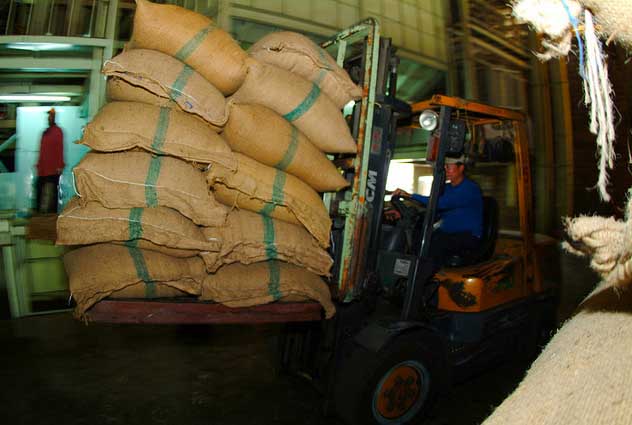
Rice storage facilities take many forms depending on the quantity of grain to be stored, the purpose of storage, and the location of the store.
Storage systems can be through bag, bulk, or hermetic containers.
Bag storage
In most parts of Asia grain is stored in 40−80 kg bags made from either jute or woven plastic. Depending on the size of storage, these bags are normally formed into a stack.
When using bag storage consideration needs to be given to the following:
- Jute bags should not be stacked higher than 4 m and plastic bags 3 m. Plastic bags are more slippery and the stacks will be less stable.
- Bags should be stacked under cover e.g. under a roof, in a shed or granary or under water proof tarpaulins.
- A one meter gap should be left between and around stacks and 1.5 m clearance between the top of the stack and the roof.
- Bags should be stacked on pallets or on an above ground structure to avoid the possibility of absorbing moisture from the floor.
- Bags should not be stacked on a bed of rice husks or bags filled with rice husks, as these are difficult to keep free from insect infestation.
- Bags should be stacked so that fumigation can be undertaken easily. The dimensions of the stacks should be set to facilitate sealing with a single fumigation sheet.
- The efficiency of bag storage can be improved if a hermetic plastic liner bag like the IRRI Super bag is used inside the existing storage bag especially for seeds but also for commerical rice.
Some farmers use bag storage in outside granaries, which have been constructed from timber or mud/cement or large woven bamboo or palm leaves.
Bulk storage
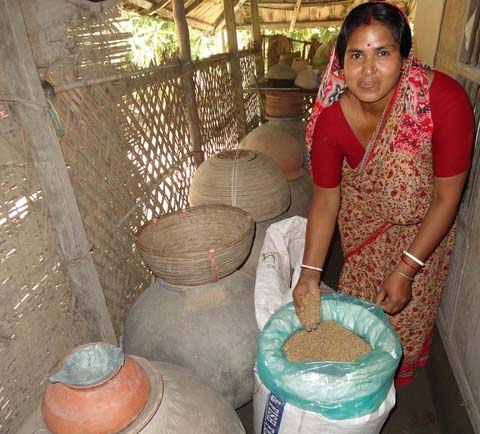 Farm level bulk storage
Farm level bulk storage
At farm level grain is often stored in bulk in small outside granaries or in woven baskets or containers made from wood, metal or concrete, which are located under or inside the house. These storages vary in capacity from 200−1000 kg.
Losses from insects, rodents, birds and moisture uptake are usually high in traditional bulk storage systems.
Commercial bulk storage
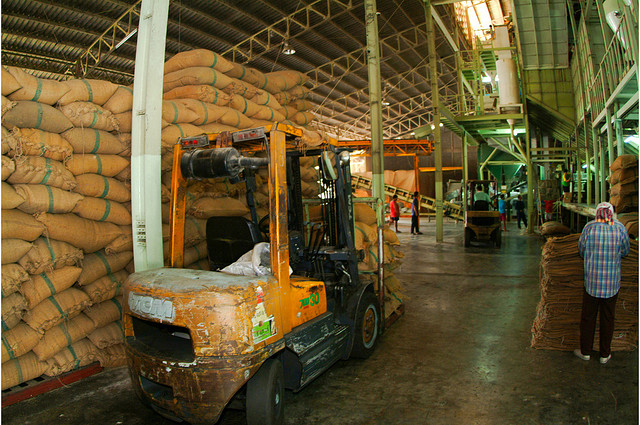
The large export mills and collection houses sometimes use metal or concrete silos. These silos range in size from 20−2,000 ton capacity. Silos have the advantage that they can be more easily sealed for fumigation and less grain is spilt or wasted.Silos are not very common in Asia because of problems with moisture migration inside the silo which results in hot-spots and molds.
Hermetic storage
Sealed or hermetic storage systems are a very effective means of controlling grain moisture content and insect activity for grain stored in tropical regions.
By placing an airtight barrier between the grain and the outside atmosphere the moisture content of the stored grain will remain the same as when the storage was sealed. Biological activity inside the sealed container will consume the oxygen and as a result most insects will die. Hermetic storage provides moisture and insect control without pesticides.
In hermetically sealed storage systems grains are placed inside an airtight container, which stops oxygen and water movement between the outside atmosphere and the stored grain.
Fact sheet:
Types of hermetic storage systems
A hermetic storage system can be made from specially designed PVC containers such as:
- Cocoon™- commercially available
- the GrainSafe™
- the smaller 50kg IRRI Super bags - available to farmers and processors at low cost
- locally available containers - useful in rural settings, where local containers can be easily converted into hermetic storage systems
The size of hermetic storages can range from 3 liters to 2,000 tons. They can be used for paddy, brown rice, and other cereal crops such as maize and also coffee. Larger hermetic systems have also been used with milled rice.

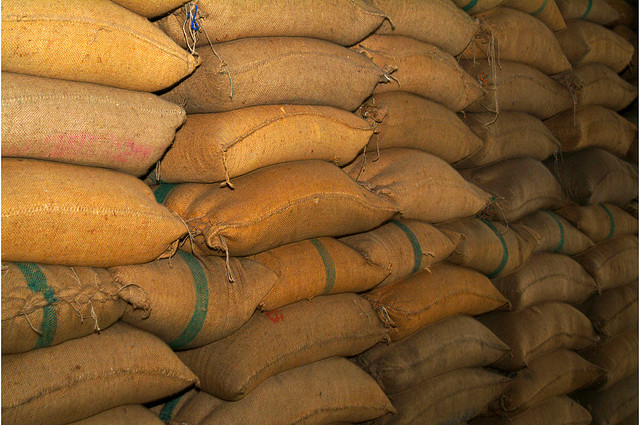 In most parts of Asia grain is stored in 40−80 kg bags made from either jute or woven plastic. Depending on the size of storage, these bags are normally formed into a stack.
In most parts of Asia grain is stored in 40−80 kg bags made from either jute or woven plastic. Depending on the size of storage, these bags are normally formed into a stack.
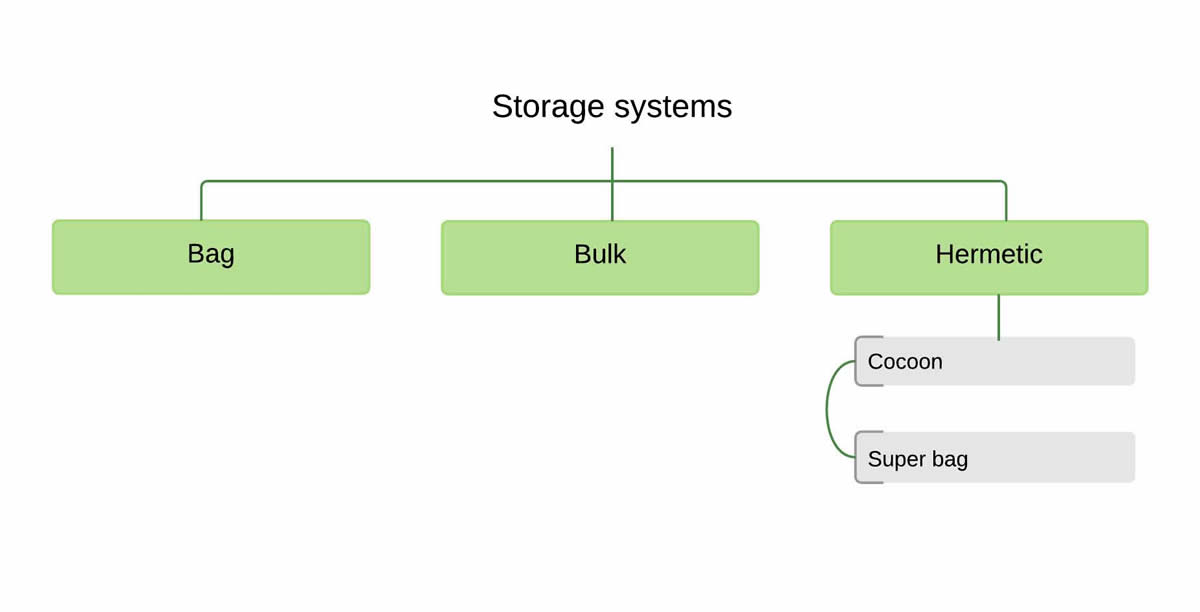
 Farm level bulk storage
Farm level bulk storage










